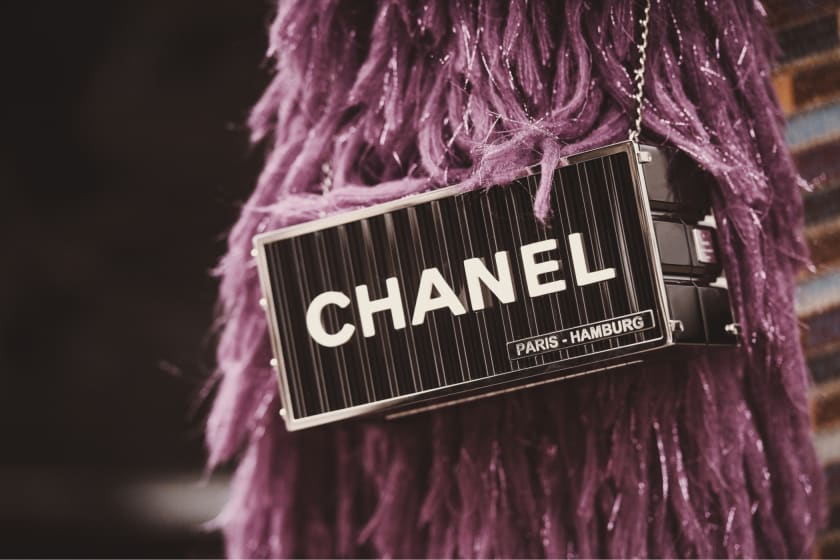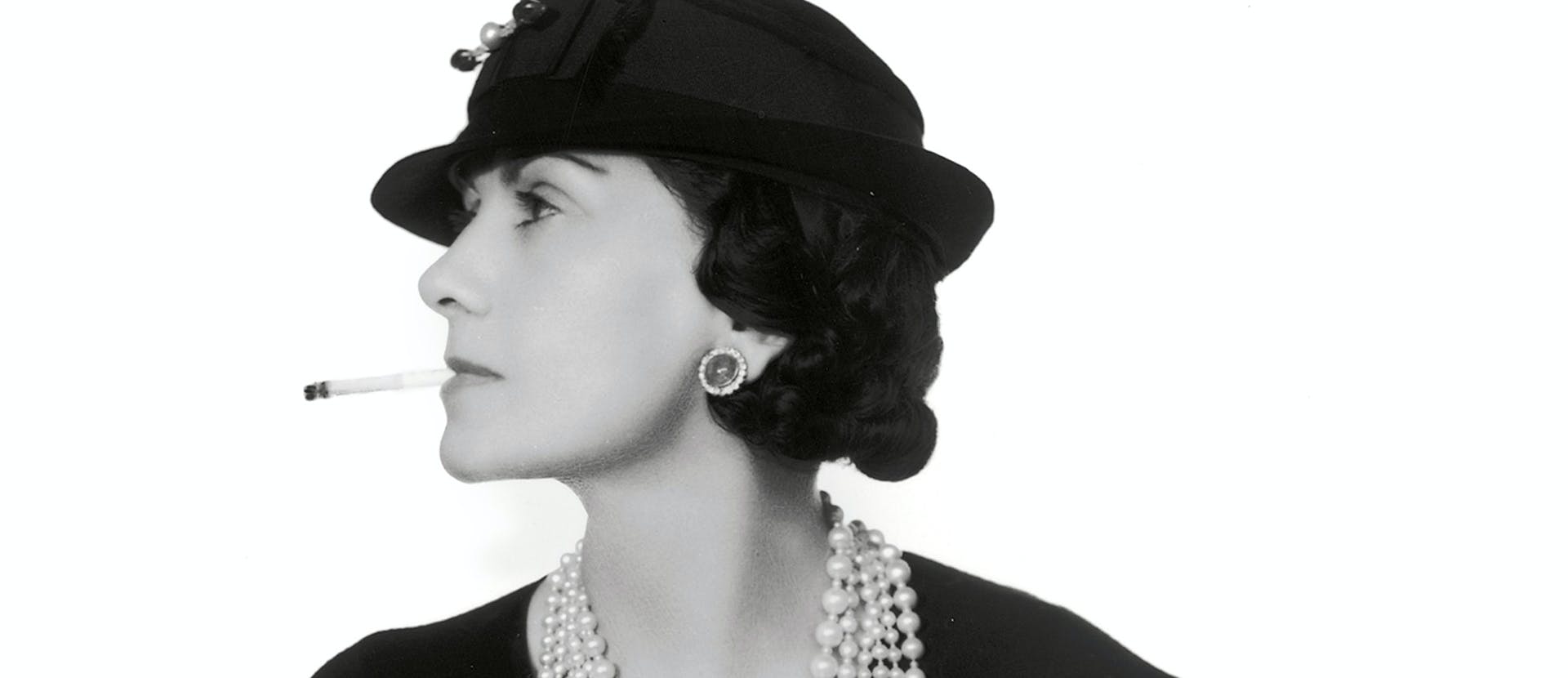Coco Chanel: A glimpse Into the Marketing Journey



A brand known for combining traditional art with avant-garde creative expressions, Chanel is one of the most recognizable fashion brands today. Designer Coco Chanel embodied style, elegance, strength, and grace. The Chanel logo reflects these characteristics. In addition to representing the founder's name, the interlacing "Cs" in the Chanel logo also symbolise luxury, sophistication and elegance.
Millard Brown ranked Chanel 6th among luxury brands in its April 2013 ranking. Today, Chanel remains one of the most successful examples of luxury marketing. As a leading fashion brand, Chanel was able to maintain its position despite not being a global company like most of its main competitors, who sell men's and women's fashion.
Meaning of the Chanel logo
Although it may not come as a surprise that Coco Chanel created the now-iconic design, there is an interesting backstory behind its creation. The interlocking Cs represent her name, but there is a story behind their development. Chanel was inspired by the interlaced curves in the stained-glass window of the Aubazine Church, which housed the orphanage she grew up in. Coco Chanel's logo helps solidify the fashion house's brand identity with a mix of class, simplicity and minimalism. Chanel has only two elements in its logo: an emblem and a word mark. This well-balanced logo conveys the brand's key attributes of sophistication and minimalism.
The early life of Coco Chanel
As a rags-to-designer-tweed story, Coco Chanel's tale is the stuff of Dickensian drama. On 19 August 1883, she was born into extreme poverty to unwed parents; after her mother died, she was sent to a Catholic orphanage and raised by nuns. In the orphanage, she was taught how to sew clothes by nuns, and the skills she learned there became the basis of her career as a fashion designer. She then moved to Paris at the age of 20.
Coco Chanel's journey as a designer
After moving to Paris at the age of 20, Coco quickly began to climb the social ladder. After working as a café singer for a short time, Chanel became a shop girl for a few years. During the time she grew up, she was popular in upper-class society because of her friendships with influential people.
As her relationship with wealthy men grew, her savings and financial support from Arthur ("Boy") Capel enabled her to open a miniature millinery shop in Deauville, France, and to sell simple sportswear such as jersey sweaters.
Her initial focus was on designing hats for women of affluence, including wives and mistresses. Her experiences during this time also allowed her to learn a great deal about the varied tastes in the fashion of the wealthy. Chanel developed her fashions for the very rich using everything she encountered among the very poor.
Founder Coco Chanel, Gabrielle Bonheur Chanel, established her fashion house in 1909. During that same year, she unveiled the Chanel logo. Each of the products created by the fashion house features the Coco Chanel logo, from jewelry to bags to dresses. Chanel's trademark logo has become a dominant aspect of its brand image with such extensive use.

With the use of jersey fabrics, she created the "poor girl" fashion look in a mere five years, gaining the attention of wealthy women seeking relief from corseted fashion. In a simple dress with a sailor tricot pattern, she wrapped women up in men's jersey sweaters. Among the things she used were a ditch digger's scarf, a mechanic's blouse, a waitress' white collar and cuffs, popularized slacks, backless shoes, and cotton dresses. Chanel's childhood had instilled in her razor-sharp survival instincts and resourcefulness, essential to her success. Chanel believes that in order to qualify as a luxury item, the product must be comfortable. She revolutionized and simplified fashion with her designs.
A report from the late 1920s claimed that the Chanel industries were worth millions and employed around 2,000 people, not just in her couture house but also in a textile mill, a perfume lab, and a jewelry workshop. With the assistance of Ernst Beaux, one of France's most talented perfume creators, she introduced Chanel No. 5 in 1921, which was a phenomenally successful perfume. The fragrance was Chanel's first major launch, and the fact that she used a simple bottle instead of the usual perfume packaging went a long way toward contributing to the scent's success. Coco Mademoiselle Parfum is a modern floral woody fragrance that is reminiscent of young Coco Chanel.
Coco Chanel’s comeback
After the outbreak of World War II, Chanel closed her couture house and did not return to fashion until 1954 because of associations with a German diplomat during the Nazi occupation. On February 5, 1954, she presented her new collection. A collarless braided cardigan jacket with a graceful skirt marked her highly-copied suit design that year.
Among her innovations were bell-bottomed pants, and she retained a classic look while doing so. Her soft, little suits were beloved by the American and British press, who saw them as a true breakthrough, uniting chic and youth in a new, accessible way. The French press, still bitter about her behavior during the war, was lukewarm.
As an iconic garment worn by teenagers and grandmothers alike, Chanel had pulled off a coup and a miracle. Her comeback was a miracle at 71 years old. After a hard day's work, she died in 1971, aged 88. Since then, more words have been written about her than any other fashion designer.
Chanel's marketing strategy

Except for a few men's fragrances, Chanel's primary focus is fashion for women, and to stick to promoting the knowledge of its founder, Coco Gabrielle Chanel. So it is not surprising that most of the brand's communication revolves around her heritage but also how the company reaffirms its image while remaining modern.
Here are a few strategies followed by this iconic brand:
Balanced exposure and scarcity marketing
Most brands today opt for fast overexposure and expansion into unrelated categories like stationery, which can quickly dilute a brand. The result is that the brand equity is reduced from luxury to premium permanently. Chanel, on the other hand, ensured exclusivity constantly. Brand exposure is protected through scarcity marketing, which instills in the customer fear of losing freedom of choice. The brand has integrated scarcity marketing into its products and advertising strategy.
Values-based marketing through content
A liberated young woman, in line with the brand's history, is the main storyline mentioned throughout its marketing campaign. Chanel's content does more than build trust; it is always focused on telling interesting stories, instead of hard-selling its products. Chanel has the most engaging content among its competitors, Dior, Hermes, and Louis Vuitton, with video shorts featuring celebrities like Pharrell Williams and Keira Knightley.
Focusing more on star products
As Chanel recognizes its 'stars' as its perfume and watch divisions, the company invests in advertising in fashion publications such as Vogue and Elle, which cater to its target audience.
Innovation in technology for affordable products
Assuring young earners of a consistent source of profits by building a legacy brand for a century and enforcing its values through content is a very effective way to attract revenue from them. Chanel has released a free virtual lip scanner application that lets you choose a colour from your surroundings, search for the matching colour in the Chanel catalogue, and try it on virtually. This is one of many steps the brand has taken to engage its younger customers.
Product innovations by Chanel that deeply influence modern fashion
The popularity of wearing black for other occasions than funerals - Before Chanel, black was reserved for service people and funerals. According to speculation, she based her clothing designs on the nuns' attire at her orphanage.
Introducing corset-free dresses - Women no longer have to suffocate themselves to cinch their waists, as they did a hundred years ago. Chanel popularized the corset-free dress, although Jean Patou originally created it. This is the reason it is often said that Chanel liberated women in fashion.
Coco invented the Little Black Dress, removing uncomfortable frills and corsets from women's clothing and replacing them with a fitted and stylish black dress.
Bringing jersey fabric from men's athletic wear to modern haute couture - Often considered Chanel's single most impactful innovation, she brought jersey fabric from athletic wear to modern high fashion.
Introducing the hands-free sling bag - Coco created the hands-free sling bag to free women from being physically tied down. Women were able to go about their days without worrying about carrying their bags with the 2.55 bag, a landmark in the industry.
Conclusion
Even though Chanel is 100 years old, it still maintains its position as an elegant and modern brand. Its crossed C logo is instantly recognizable. The brand's celebrity choice always evokes a classic look while maintaining a unique personality, and its Paris runway shows are spectacular, with sets as varied as giant supermarkets and sandy beaches. Still cemented in its French roots, the brand has a strong identity. But perhaps, most importantly, Coco continues to inspire women through her own style, much like she did in her lifetime. By integrating old and new marketing strategies, they have achieved remarkable results.



















